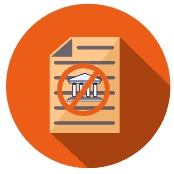
Paid Legal Services
If you filed a Motion to Quash...
If you filed a motion to quash, or a Prejudgment Claim followed by a Motion to Quash, the landlord MIGHT file an opposition to it. Usually, they don't. The Motion to Quash is essentially to challenge whether the Court has "jurisdiction" over you, so that they can proceed at all with this case. It is a highly technical area, not one of common sense, but it is an important part of the legal game.
Removal to Federal Court
If you are the tenant of a foreclosed landlord, and are now being evicted by the foreclosing bank or someone who bought the property at the foreclosure auction, you have special rights created by Congress, called the Protecting Tenants at Foreclosure Act of 2009 ["PTFA"]. Since this is a federal law, and the landlord can only evict you under the PTFA, it should be decided in Federal Court as a "Federal Question." We therefore "remove" your eviction case to the federal district court, literally making a federal case out of it. The federal court judges have so far found any means to misconstrue the situation to justify "remanding" the case back to State Court. We are awaiting a decision by the Ninth Circuit on this issue, so it's worth trying each time, so that if the law changes, you're right there to take advantage of it. Depending on how the given federal judge handles these cases, you may need to file a response after removing the case.
Writ of Mandate on the Motion to Quash
As simple as the motion to quash hearing is, the judges make a surprising number of mistakes in ruling upon it. The judge may deny it because you weren't there, or deny it because the landlord doesn't claim to have served you, or deny it despite the landlord's admission that you weren't properly served. The case might have been heard by a commissioner or judge that you legally excluded, in defiance of the law. Sometimes the judge illegally orders you to "answer only," or improperly sets the case for trial prematurely, in order to help the landlord evict you and criple your case. [Yes, it's that bad!] Where the judge has made a mistake in ruling on the motion to quash, you have the right to a mini-appeal on that narrow issue, called a Petition for Writ of Mandate.
This can be filed within the time to respond. If your case was first removed and remanded, then it would be after the trial court decided the motion to quash after that remand. If you win on this Petition, the case goes back to Square One.
Legal Services




![170 - Petition for Writ of Mandate [Quash - Unlimited] 170 - Petition for Writ of Mandate [Quash - Unlimited]](https://d2j6dbq0eux0bg.cloudfront.net/images/1197002/855407470.jpg)





















